Disassembling a Dying Ash Tree so It Can Be Reborn
LONDON — The afterlives of trees are grim. Many become mulch, others fodder for fires.
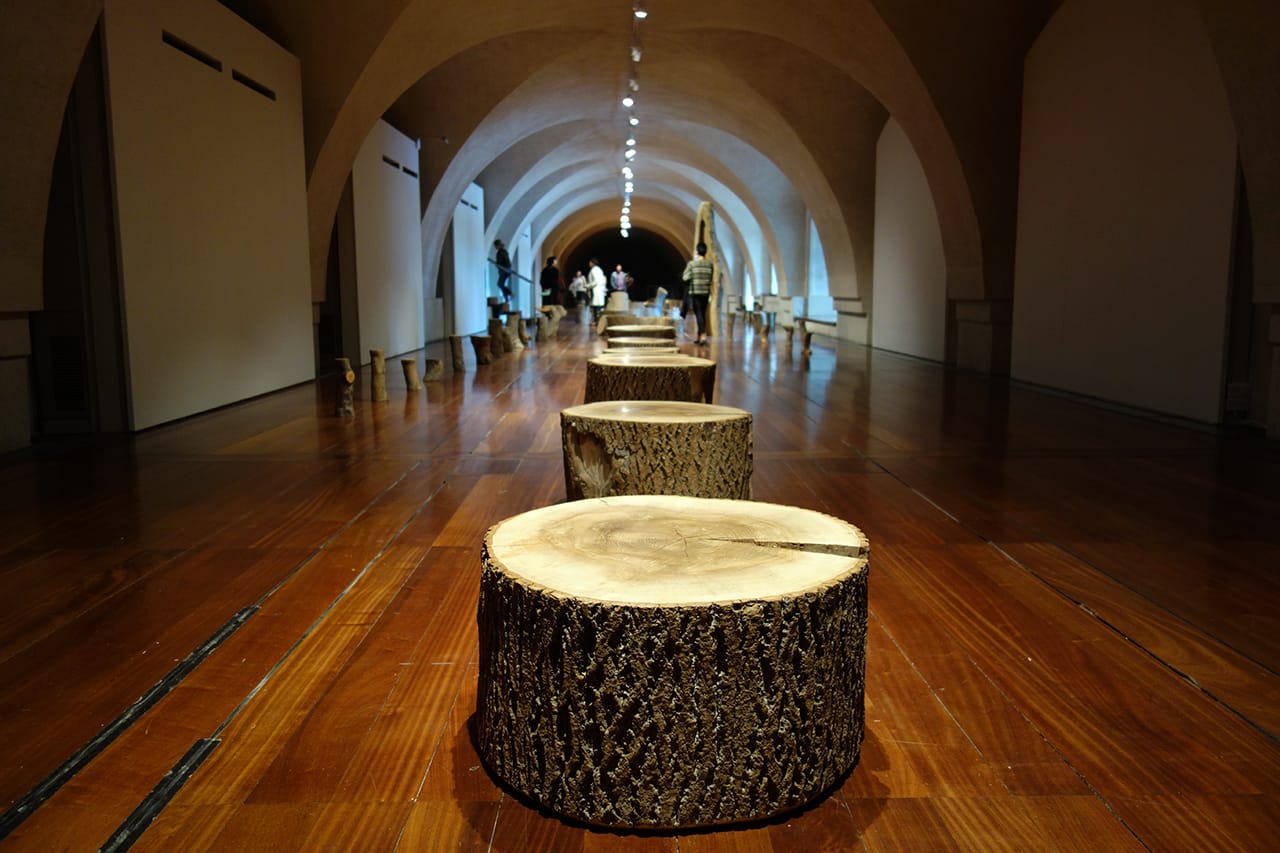
LONDON — The afterlives of trees are grim. Many become mulch, others fodder for fires. When a nearly two-century-old ash tree on the Yorkshire farm of Max Lamb’s grandfather started to rot in 2008, the British designer envisioned a more dignified transformation for the old arbor.

My Grandfather’s Tree, recently installed in the Embankment Galleries of Somerset House as part of the London Design Festival, revealed the tree in 130 segments. Some symmetrical, others more gnarled, each is intended to be a utilitarian object, whether stool, table, or other surface. The exhibition, organized by London-based Gallery Fumi, started with a meditative space where video of the tree’s disassembly by Lamb’s tree surgeon friend Jon Turnbull played on one wall, with a slide show of family photos and other associated visuals projected on the other. Three archways, one of which was adorned with a sketch of the tree broken into pieces, led to stairways that brought viewers down to the tree spread out in pieces on the floor. While each individual piece might appear like nothing more than a rather well-cut log, together, with the 187 growth rings visible on the sliced surfaces, they emphasized how the identity of the tree was reimagined into something that celebrated its long life.
Lamb’s previous work includes seating and furniture hewn from rock, made from metal tubing, and molded from copper. My Grandfather’s Tree is more conceptual, but emphasizes the interest in repurposing unexpected material. Lamb stated in the exhibition text that he “wanted [his] grandfather’s tree to survive beyond its rooted life, to offer the tree an afterlife and celebrate the inherent potential of the material within.” And in its place, new ash tree saplings are already growing from the fallen tree’s roots.
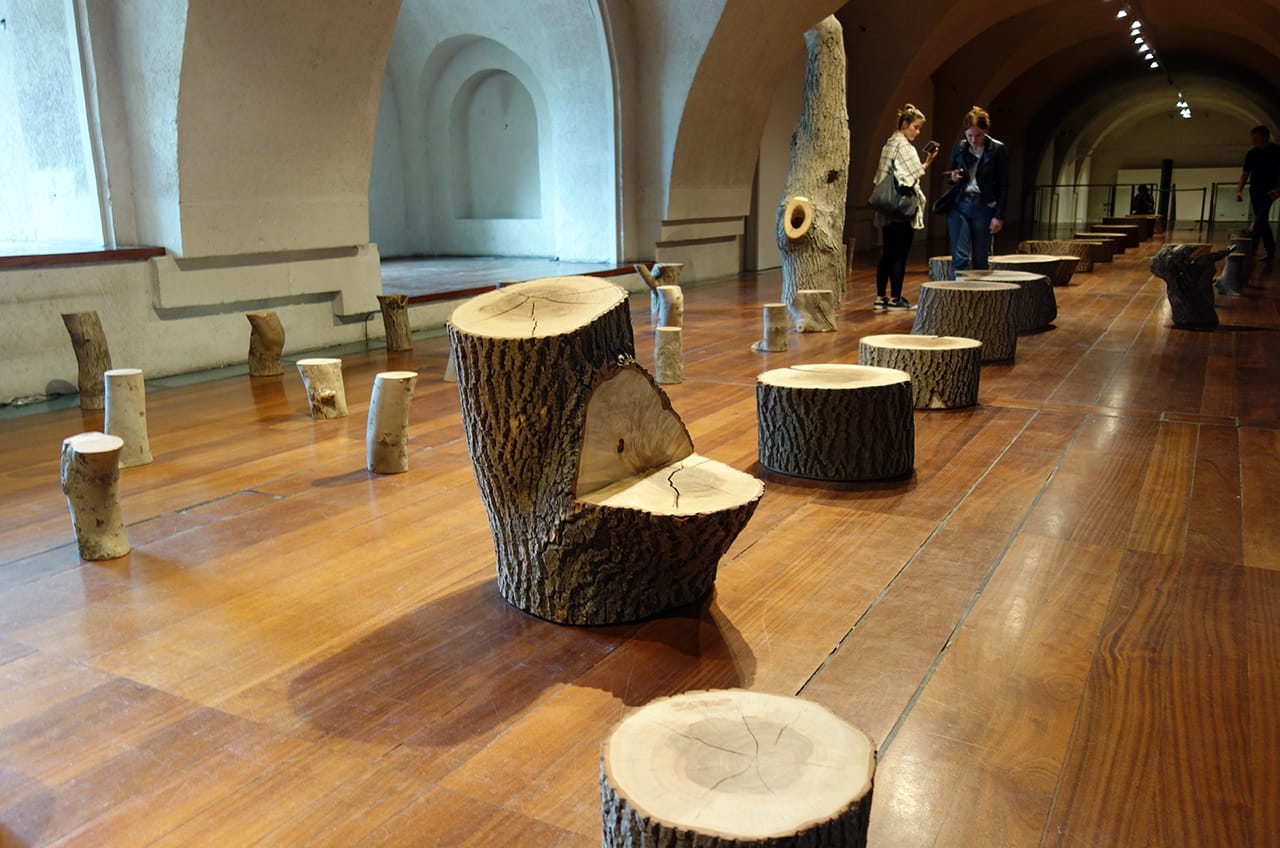
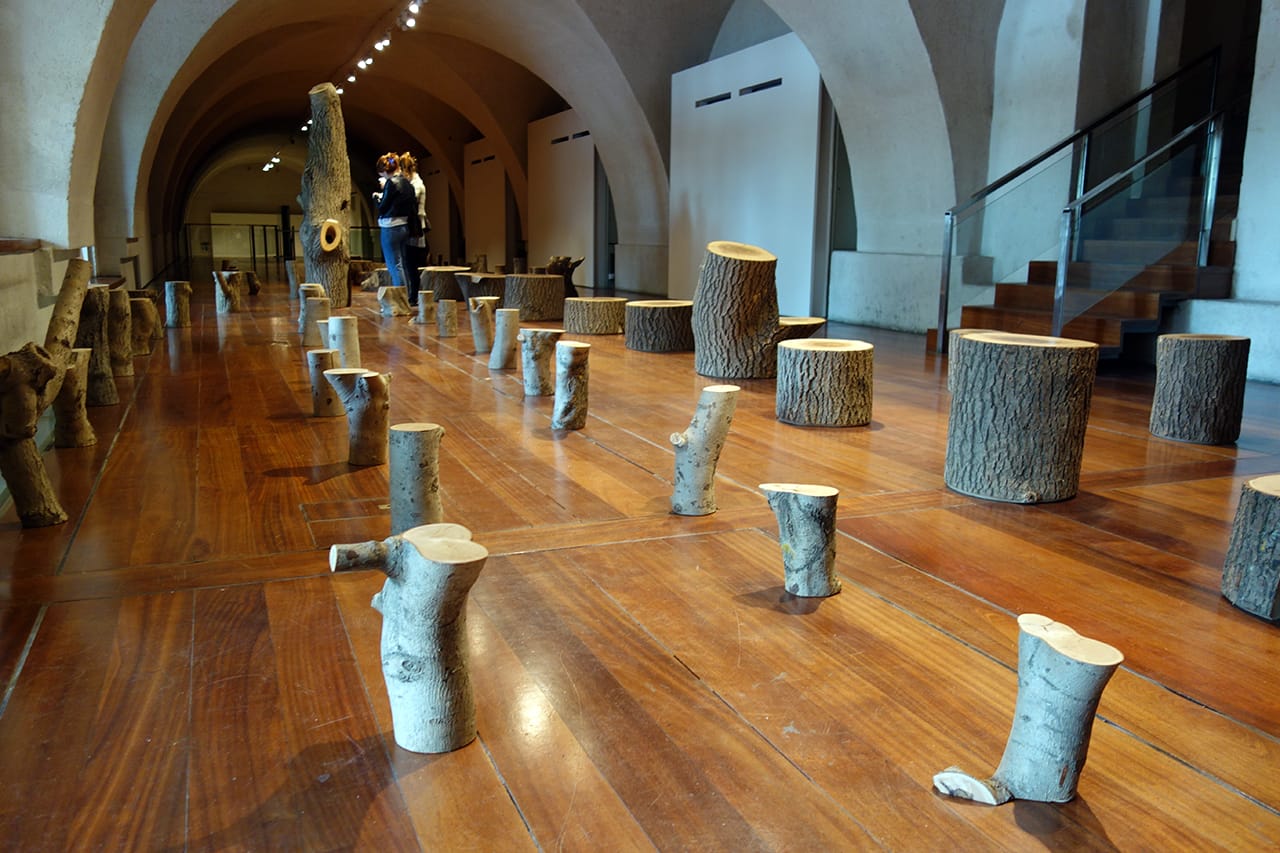
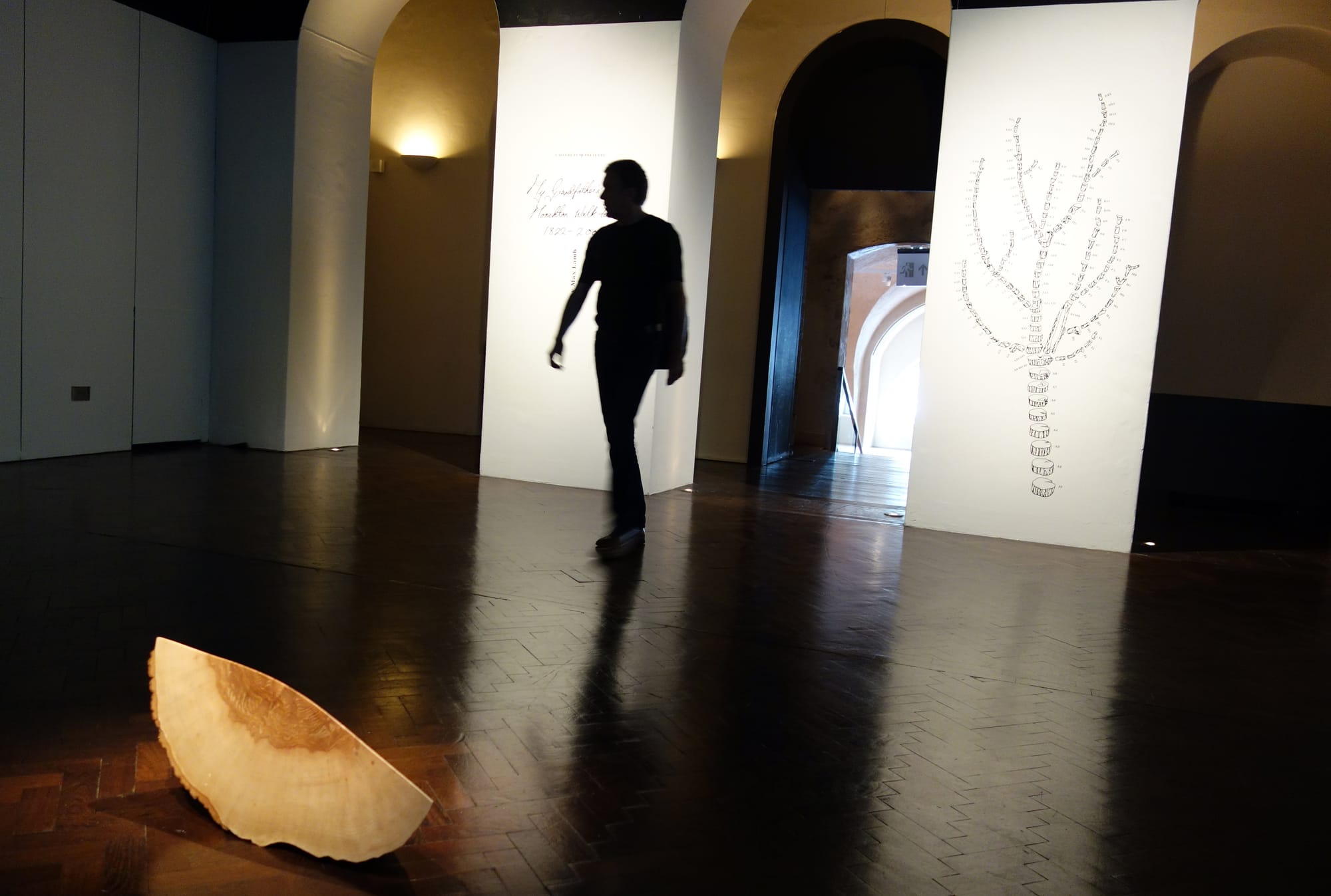
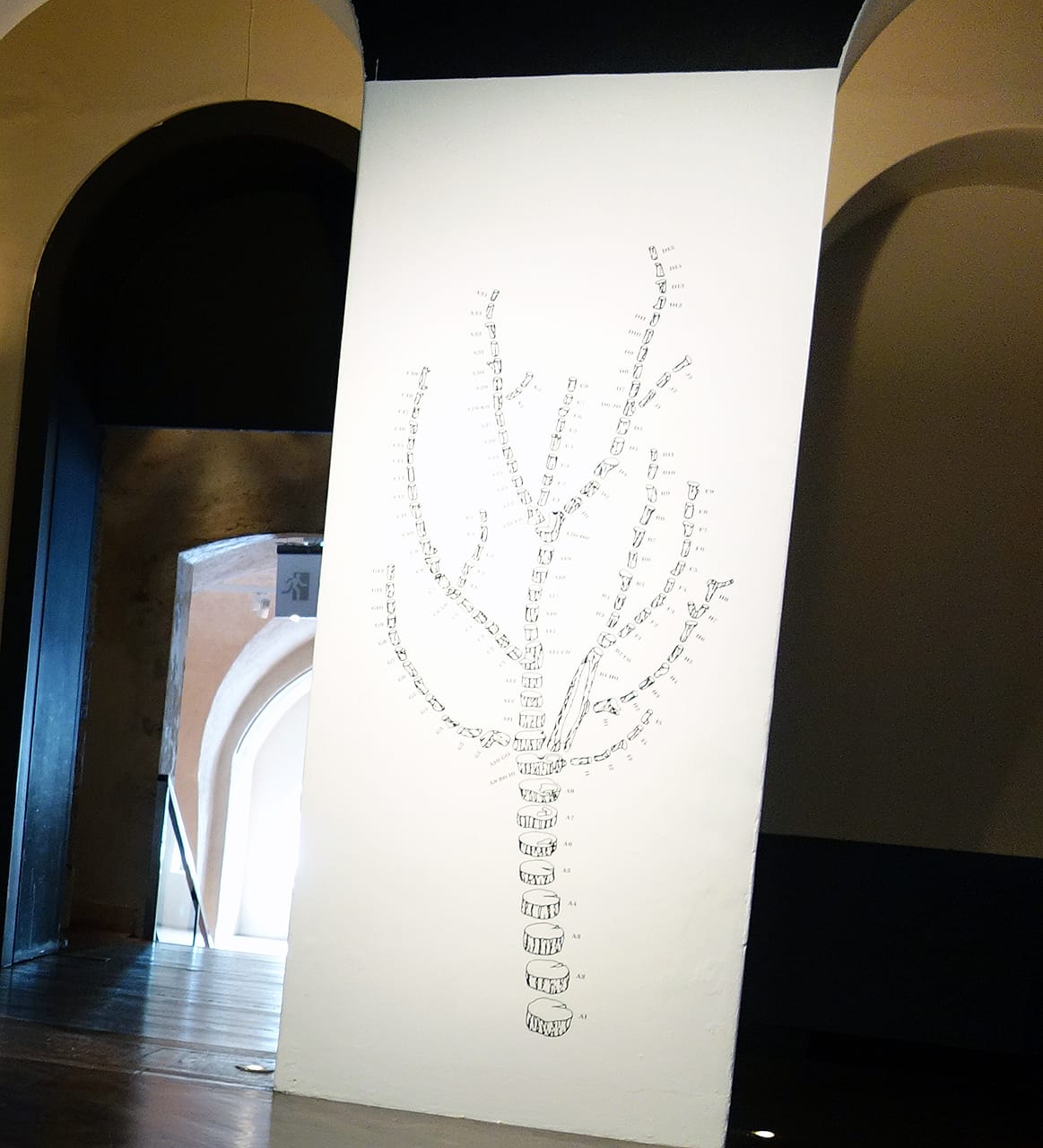
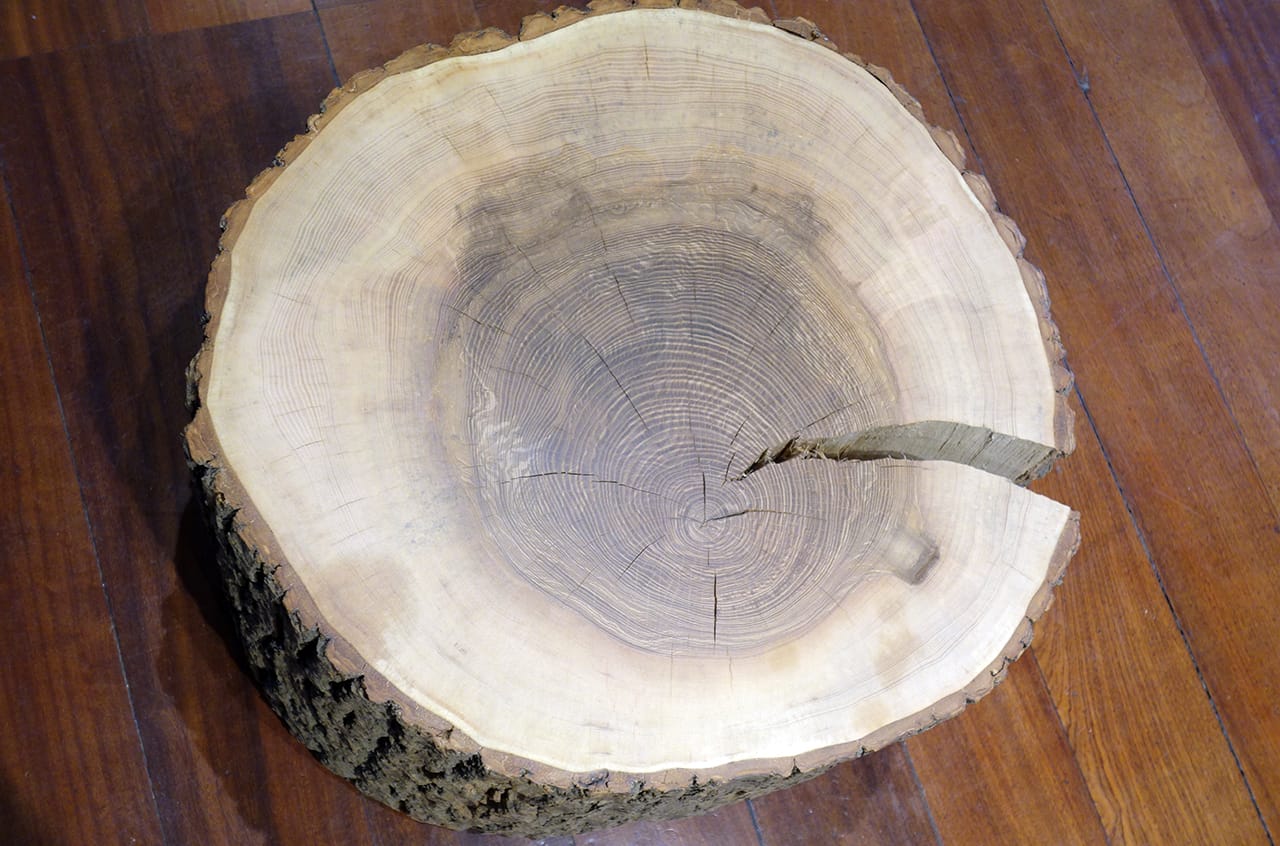
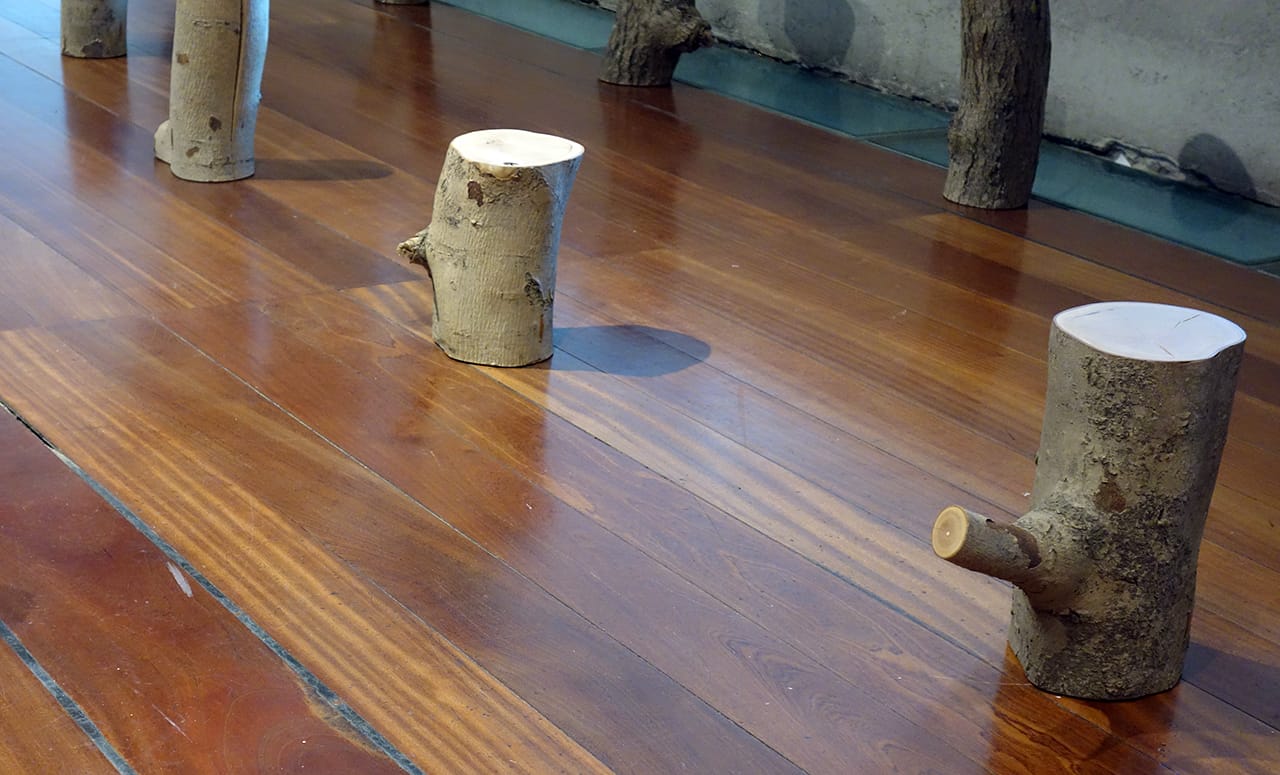
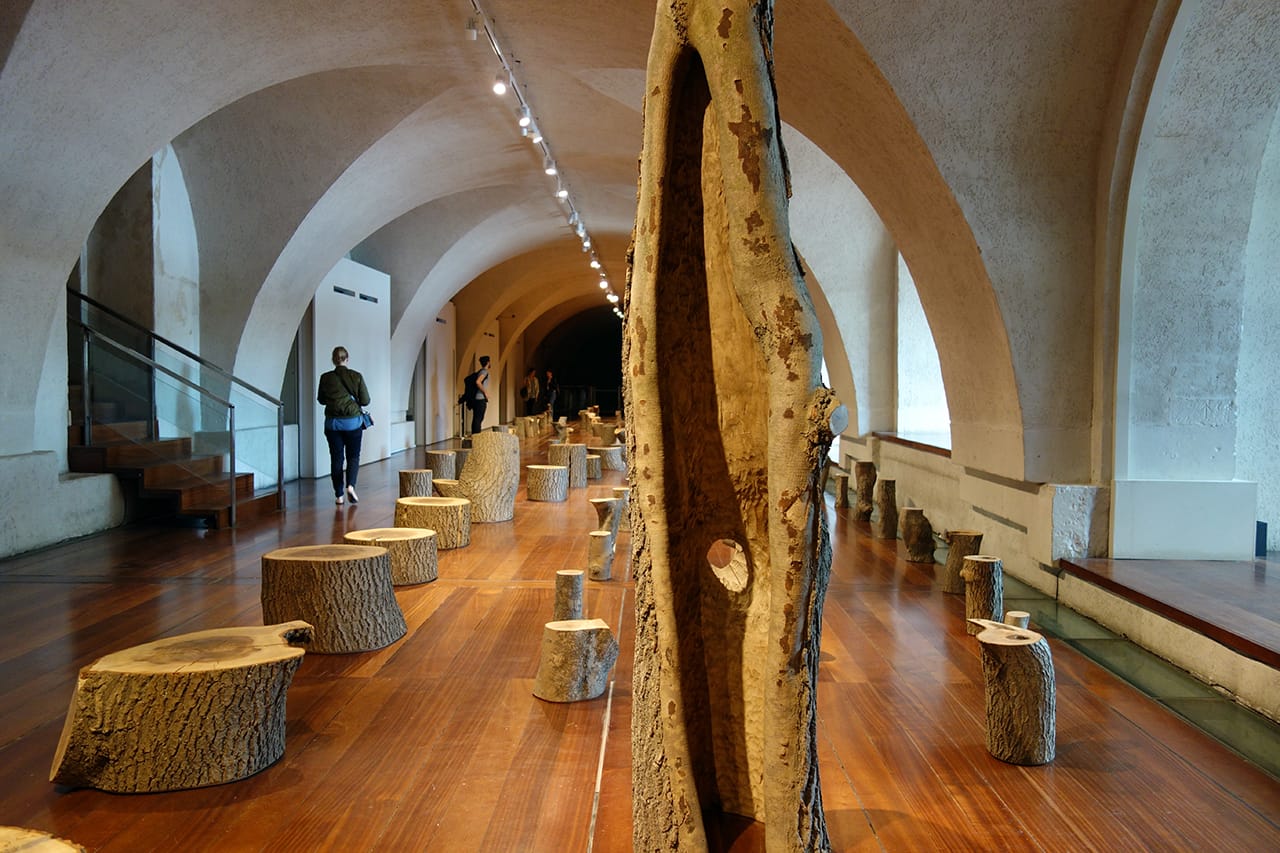
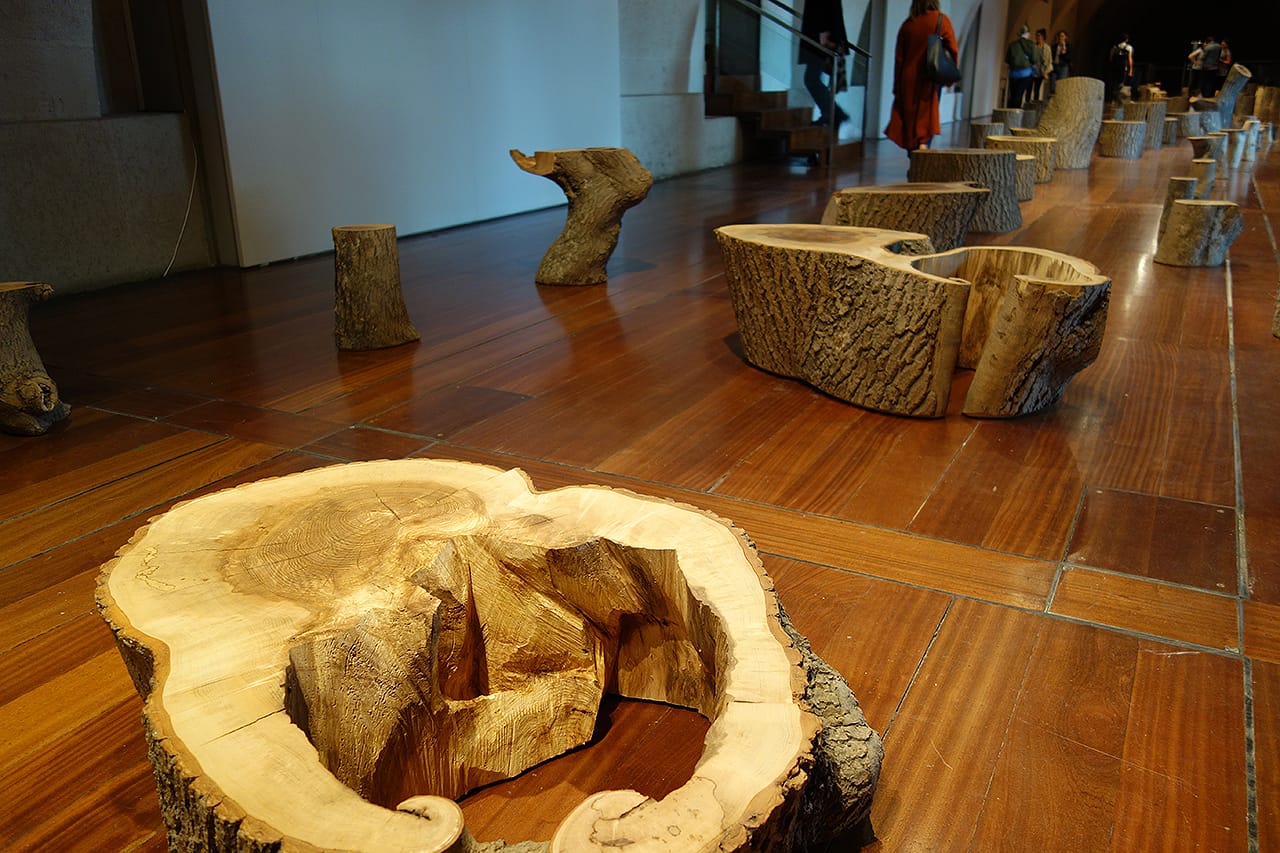


Max Lamb: My Grandfather’s Tree was on view September 21 to 27 at the Embankment Galleries of Somerset House (Strand, London) as part of the London Design Festival.





